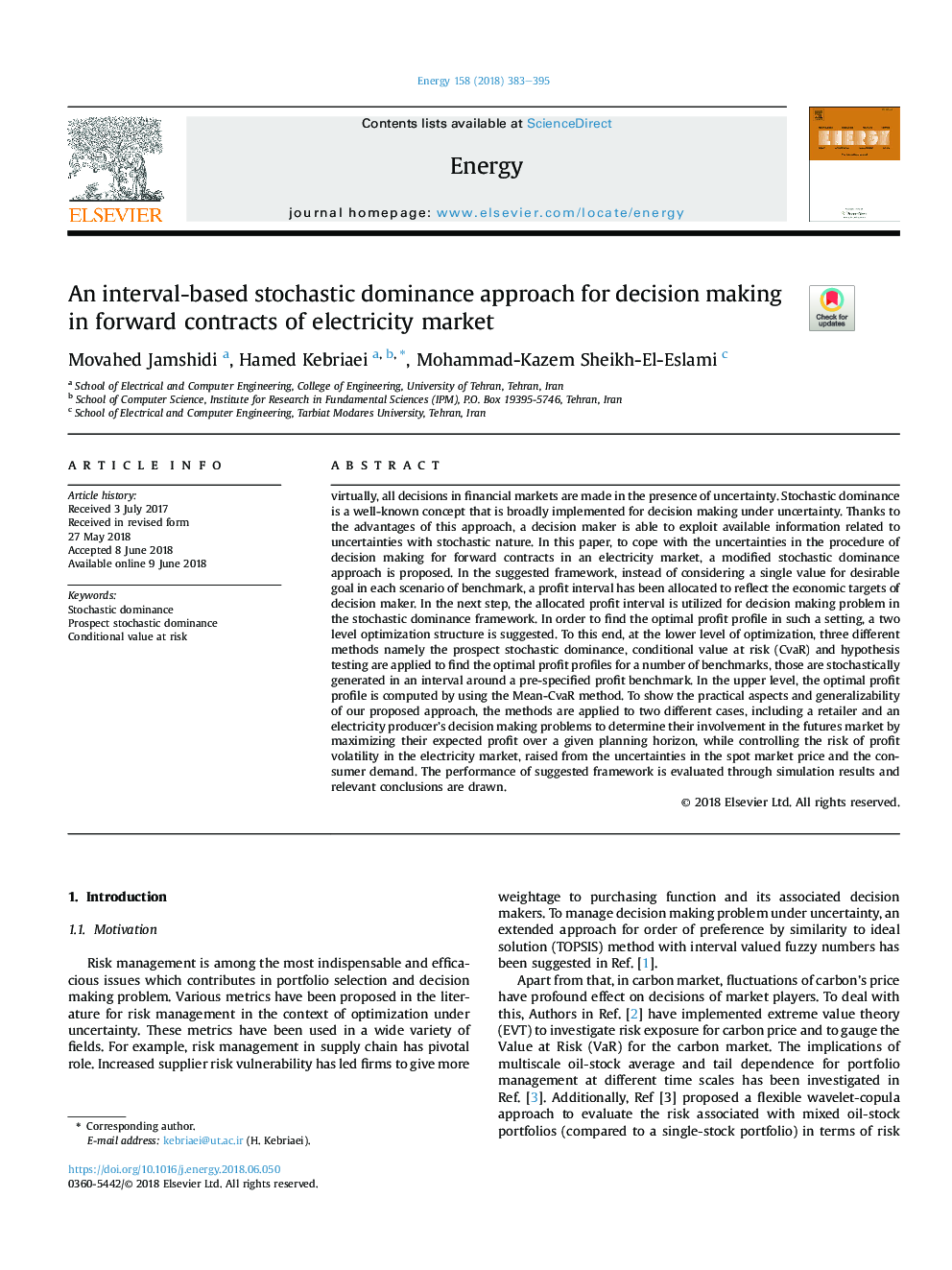| Article ID | Journal | Published Year | Pages | File Type |
|---|---|---|---|---|
| 8071157 | Energy | 2018 | 13 Pages |
Abstract
virtually, all decisions in financial markets are made in the presence of uncertainty. Stochastic dominance is a well-known concept that is broadly implemented for decision making under uncertainty. Thanks to the advantages of this approach, a decision maker is able to exploit available information related to uncertainties with stochastic nature. In this paper, to cope with the uncertainties in the procedure of decision making for forward contracts in an electricity market, a modified stochastic dominance approach is proposed. In the suggested framework, instead of considering a single value for desirable goal in each scenario of benchmark, a profit interval has been allocated to reflect the economic targets of decision maker. In the next step, the allocated profit interval is utilized for decision making problem in the stochastic dominance framework. In order to find the optimal profit profile in such a setting, a two level optimization structure is suggested. To this end, at the lower level of optimization, three different methods namely the prospect stochastic dominance, conditional value at risk (CvaR) and hypothesis testing are applied to find the optimal profit profiles for a number of benchmarks, those are stochastically generated in an interval around a pre-specified profit benchmark. In the upper level, the optimal profit profile is computed by using the Mean-CvaR method. To show the practical aspects and generalizability of our proposed approach, the methods are applied to two different cases, including a retailer and an electricity producer's decision making problems to determine their involvement in the futures market by maximizing their expected profit over a given planning horizon, while controlling the risk of profit volatility in the electricity market, raised from the uncertainties in the spot market price and the consumer demand. The performance of suggested framework is evaluated through simulation results and relevant conclusions are drawn.
Related Topics
Physical Sciences and Engineering
Energy
Energy (General)
Authors
Movahed Jamshidi, Hamed Kebriaei, Mohammad-Kazem Sheikh-El-Eslami,
